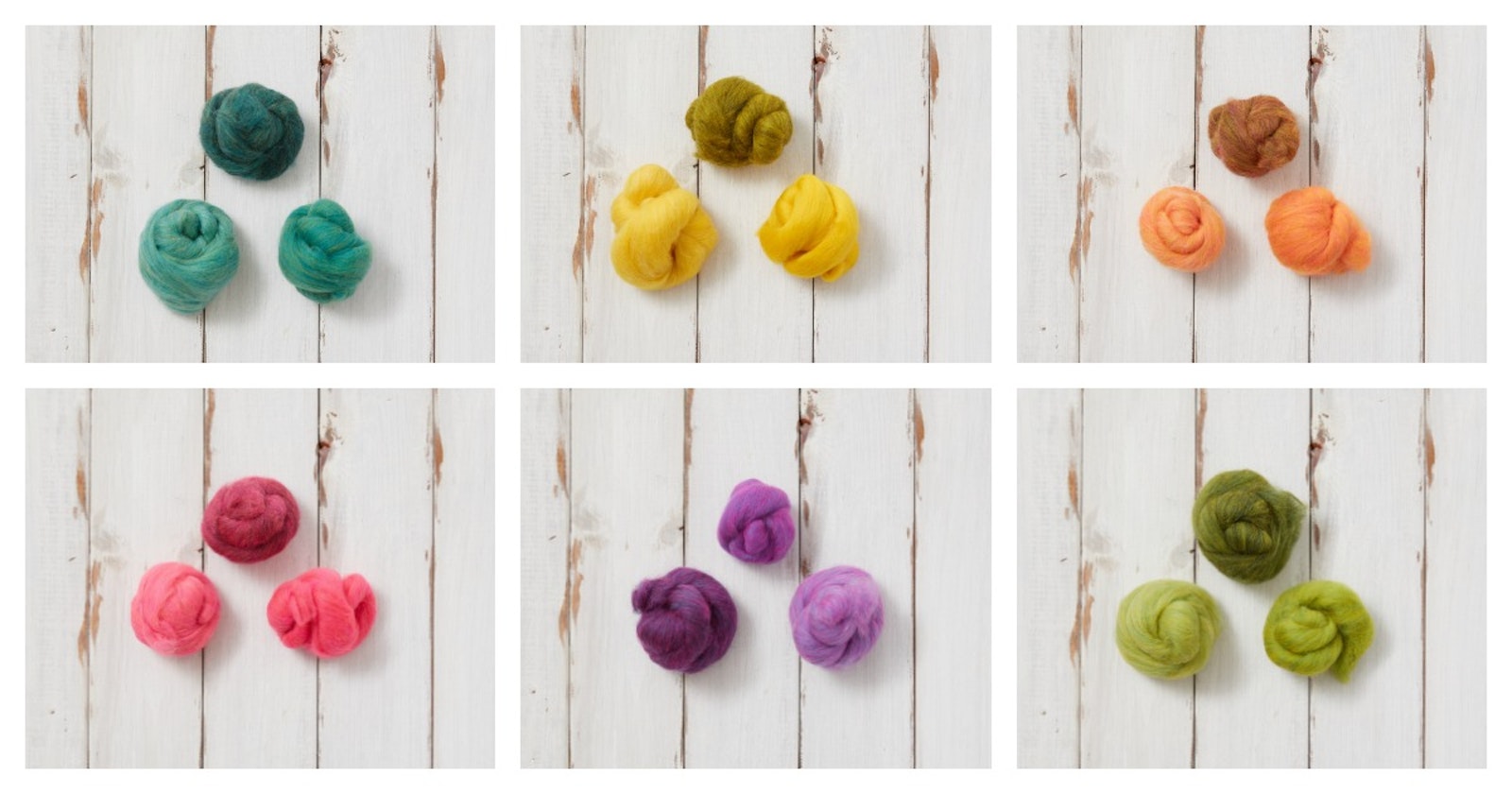Flamboyant kaleidoscopes of purple-pink braids rub shoulders with cousins in more subtle shades. All that fiber makes a colorscape of such depth and richness that your eyes ache from sheer joy (or blown retinas). Such stuff is spendy, though, and not all of us can get to fiber festivals or stores that specialize in hand-dyed goodies.
What if I told you that you could create combed top that had all the richness of hand-dyes but was made from commercially prepared fiber in the flattest primary shades? Are you in? The secret here is not in the dyeing, but in the blending.
No, really. She did all this with 3 colors.
In Color Blending for Spinners, fiber artist Esther Rodgers shows how you can combine a mere three colors of dyed top (plus black and white) to create a veritable rainbow of custom shades. All colors derive from the three primary hues: red, yellow, and blue. Esther shows how to comb these together into secondary and tertiary colors familiar to anyone who grew up with the Crayola 64 Pack. And using handcombs lets you control how much you blend, producing the irregular tonal shades that are a hallmark of hand-dyed fiber.
Making tints and shades opens up a world of color options.
Then things get interesting. Adding black or white to any hue creates a shade or a tint. Basically, these are darker or lighter versions of your original color, but those words don’t begin to encompass the depth and nuance you can get. Esther isn’t kidding when she says that color blending creates a rainbow at your very fingertips: 3 colors become 12, then 36, then 108, then, then . . . Well, you get the point.



